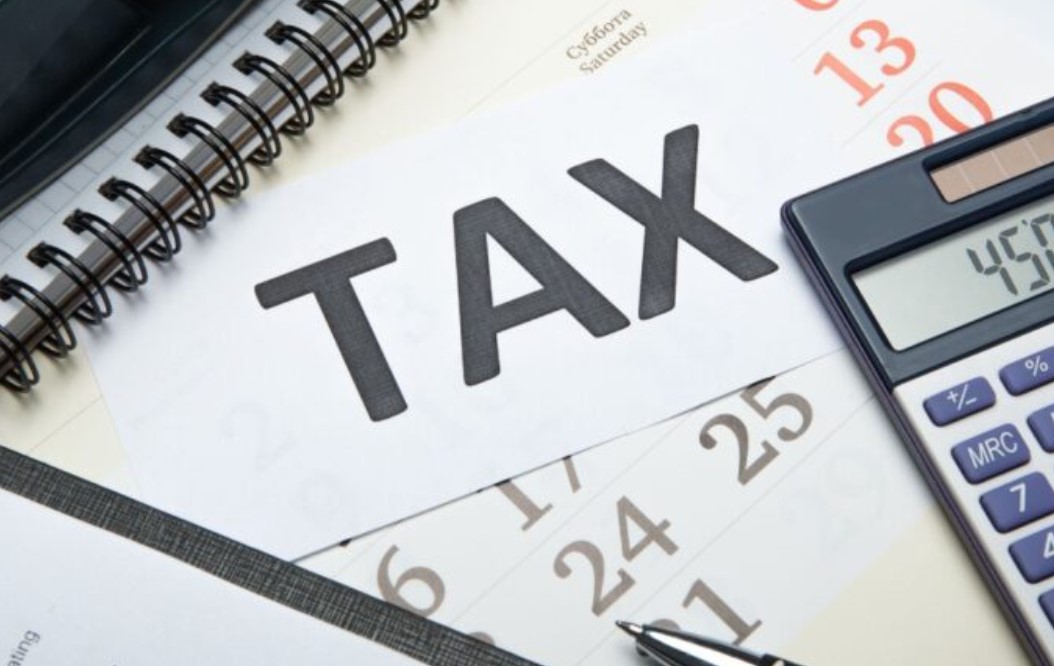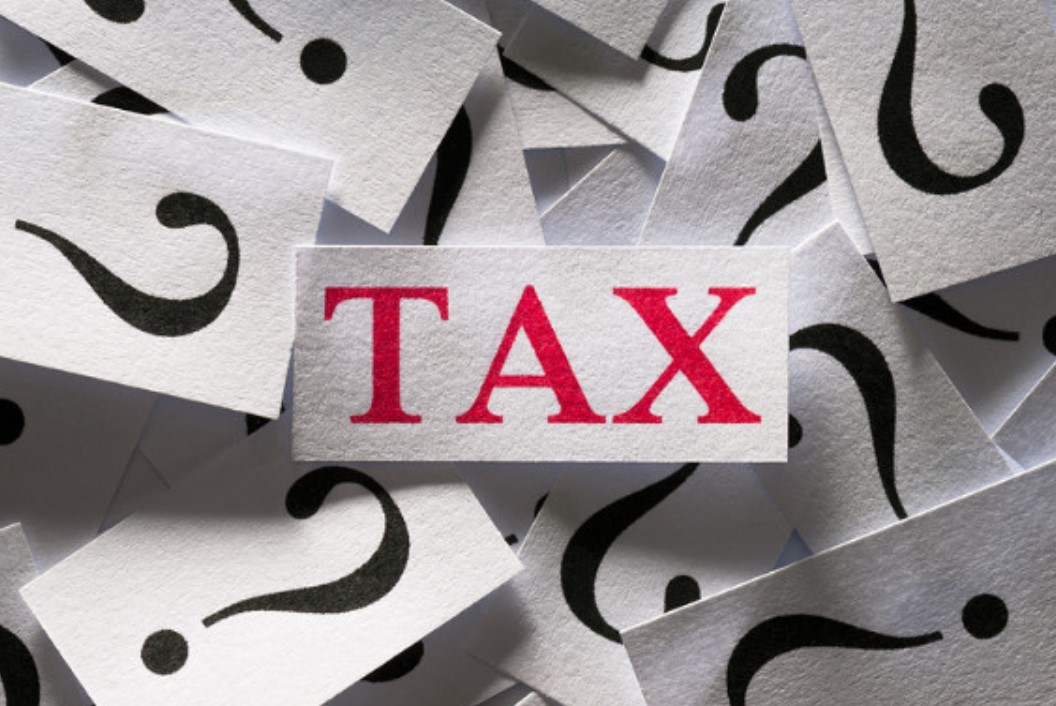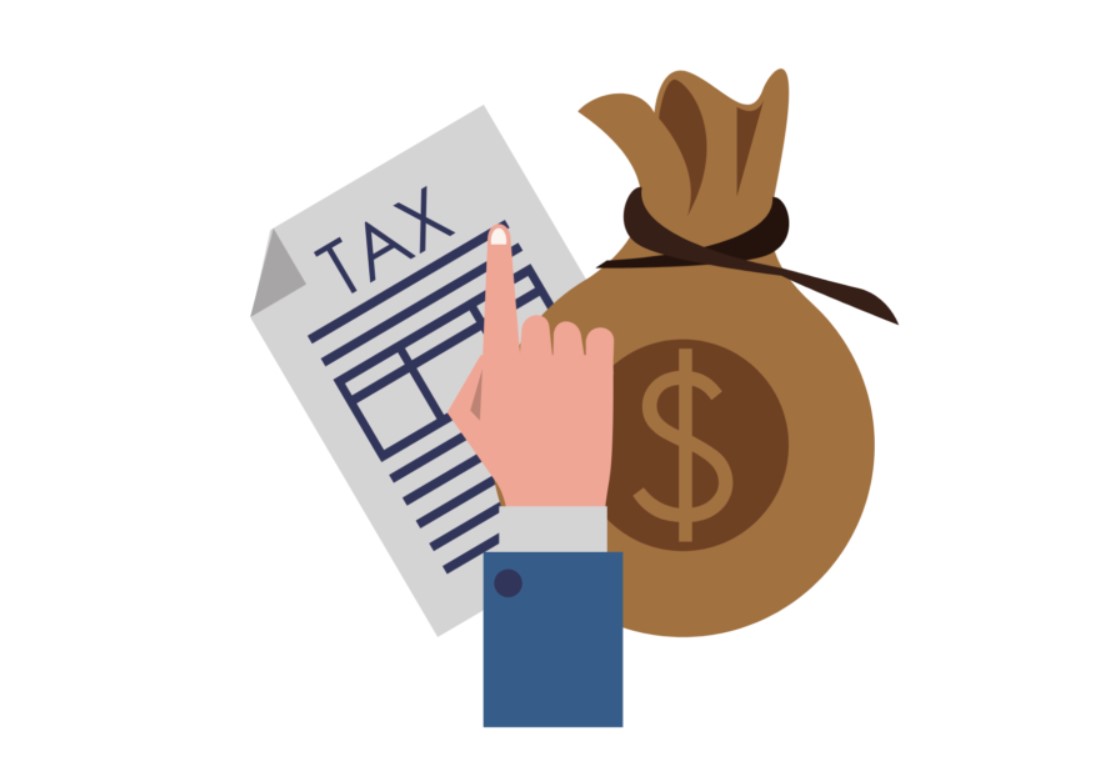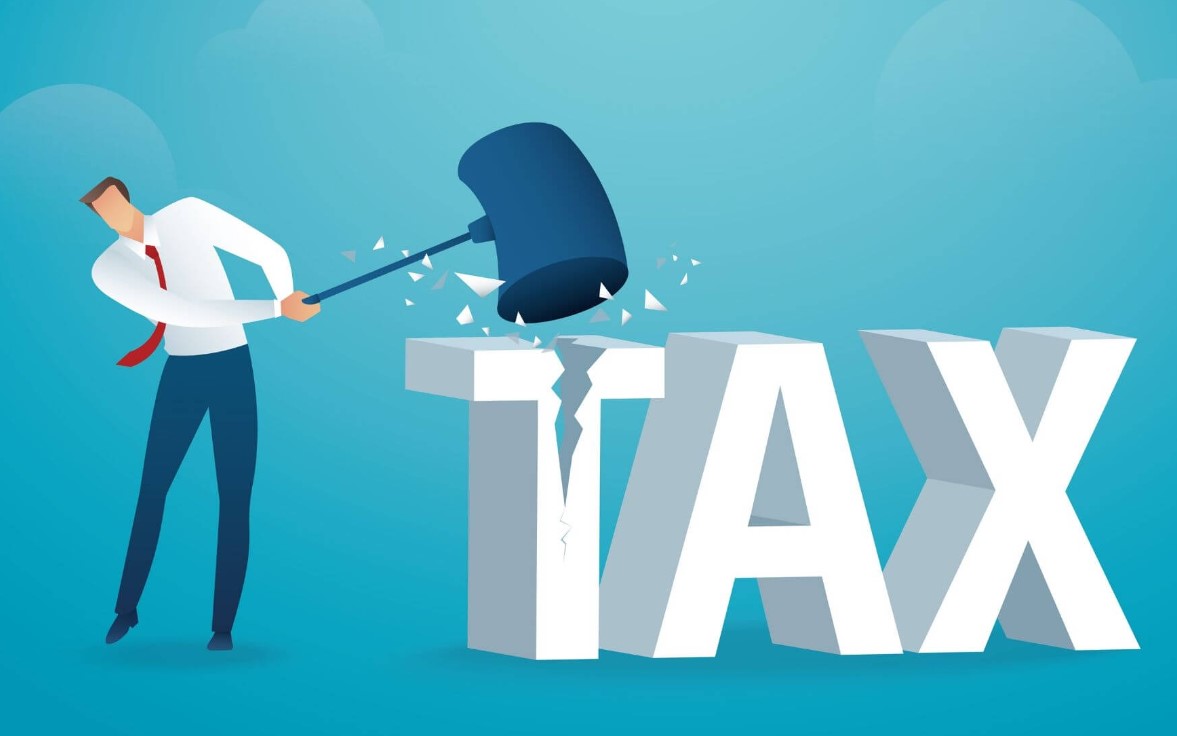How to Reduce Tax Liability for Small Business Owners
Running a small business comes with its challenges, and managing tax liabilities is a crucial aspect of keeping your business financially sound. As a small business owner, understanding strategies to reduce tax liability can significantly impact your bottom line. This guide will walk you through effective tax planning tips, technology solutions, and real-world examples to help you minimize your business tax burden and maximize savings.
Understanding Tax Liability for Small Businesses

Tax liability is a term every business owner should understand thoroughly, as it’s the amount owed to the government based on earnings, taxable deductions, and credits. For small business owners, managing tax liability effectively is essential to maximizing profit, ensuring compliance, and sustaining long-term business growth.
What is Tax Liability?
Tax liability is essentially the total amount of tax a business owes to federal, state, or local tax authorities. The calculation of tax liability depends on the income generated by the business, applicable tax rates, eligible deductions, and credits. For instance, a business that generates a higher net income will likely face a larger tax liability compared to one with lower earnings, assuming similar tax deductions.
For small businesses, tax liabilities can vary significantly depending on the business structure. The primary business structures are:
- Sole Proprietorship: For tax purposes, the IRS treats sole proprietors as individuals rather than separate legal entities. All business income, expenses, deductions, and credits are reported on the owner’s personal income tax return. This is why the sole proprietor’s tax liability directly aligns with their business income.
- Partnerships and Limited Liability Companies (LLCs): In a partnership or LLC, income is typically “passed through” to each partner or member, who then reports it on their personal tax return. This can provide tax advantages, as it avoids the “double taxation” associated with traditional corporations.
- S Corporations: An S Corporation, similar to an LLC, allows income and losses to be passed through to shareholders. This structure also offers potential tax savings by allowing owners to pay themselves reasonable salaries while taking additional income as distributions, which can sometimes reduce the amount subject to payroll taxes.
- C Corporations: C Corporations are taxed separately from their owners. This structure subjects the company’s profits to corporate tax rates, and dividends paid to shareholders are taxed again at the individual level, a process known as double taxation.
Understanding which business structure is best suited for your tax situation is critical because each option carries unique tax implications. Small businesses frequently choose LLC or S Corporation structures for tax efficiency, but consulting a tax advisor can help clarify which setup is most advantageous based on your specific business goals.
Key Tax Reduction Strategies for Small Business Owners

1. Business Tax Planning Strategies
Effective tax planning can help lower tax liability. Here’s how small business owners can develop a plan:
- Review Business Structure: Choosing the right structure (e.g., LLC, S Corporation) can impact tax obligations. Some structures offer pass-through taxation, potentially lowering overall taxes.
- Maximize Deductions and Credits: Small business owners should identify all possible deductions, such as operational expenses, home office deductions, and retirement contributions.
2. Utilizing Tax-Deferred Accounts
Tax-deferred accounts, such as SEP IRAs or Solo 401(k)s, allow small business owners to save for retirement while reducing taxable income. These accounts can be a powerful tool for lowering tax liability and securing financial stability.
3. Leveraging Tax Shelters for Small Business Owners
While tax shelters must be used ethically, some methods, like investing in renewable energy, can provide tax breaks. Small businesses can consider energy-efficient improvements that offer tax credits or deductions.
Technology Solutions to Aid in Tax Planning

Tax Software for Small Business Owners
Technology has made tax planning more efficient. Several tools can help you streamline tax management, stay organized, and reduce errors. Here are three popular software solutions:
- QuickBooks Online:
Insert image of the product
QuickBooks is a comprehensive accounting tool tailored for small businesses. It offers tax tracking, expense categorization, and real-time financial reporting. QuickBooks Online supports tax planning by generating accurate reports, essential for tax season.- Pros: User-friendly interface, integrates with banks, suitable for all business sizes.
- Cons: Subscription fees may add up.
- Price: Starts at $25 per month.
- Use Case: Great for tracking expenses, generating reports, and tax planning for businesses with high transaction volumes.
- TurboTax Self-Employed:
Insert image of the product
TurboTax is ideal for self-employed and small business owners. It includes features that help identify tax deductions related to business expenses, vehicle usage, and home office.- Pros: Provides deduction recommendations, easy-to-use interface.
- Cons: Limited accounting features; mainly focuses on tax filing.
- Price: Starts at $89 per year.
- Use Case: Ideal for small business owners who want a straightforward tax filing solution with deduction recommendations.
- Xero Accounting Software:
Insert image of the product
Xero is an online accounting software that provides tools for expense management, invoicing, and tax compliance. It’s particularly useful for business owners who want a full-suite accounting tool with tax capabilities.- Pros: Cloud-based, integration with over 700 apps, tailored for small businesses.
- Cons: Can be complex for beginners.
- Price: Starts at $13 per month.
- Use Case: Suitable for small to medium businesses needing comprehensive accounting and tax compliance support.
Comparing the Technology Solutions
Each of these tax software options has unique strengths, and your choice should depend on the specific needs of your business. While QuickBooks offers robust reporting, TurboTax simplifies tax filing. For comprehensive accounting needs, Xero is ideal but may be too advanced for beginners.
Real-World Examples of Tax Reduction for Small Businesses

- Example 1: Using QuickBooks to Track Deductions
A freelance marketing consultant using QuickBooks can automatically track expenses and categorize them for tax purposes, reducing the risk of missing deductions. - Example 2: Claiming Home Office Deductions
A graphic designer operating from home can claim a home office deduction, lowering their taxable income by accurately reporting home office expenses. - Example 3: Leveraging Renewable Energy Credits
A retail shop owner installs solar panels to reduce electricity costs. This investment qualifies for a renewable energy credit, reducing the business’s tax liability. - Example 4: Contributing to a SEP IRA
A small business with a few employees sets up a SEP IRA, allowing both the owner and employees to make pre-tax contributions, reducing the business’s taxable income.
Benefits of Reducing Tax Liability for Small Business Owners

Reducing tax liability is a powerful strategy for small business owners. By lowering the amount of taxes owed, business owners free up capital that can be used for reinvestment, expansion, or even emergency funds. Effectively managing tax liabilities isn’t just about paying less to the government; it’s about creating opportunities for growth, improving cash flow, and positioning the business for long-term success. Below are the primary benefits that small business owners can gain by focusing on tax reduction strategies.
1. Enhanced Cash Flow and Financial Flexibility
One of the most immediate benefits of reducing tax liability is an increase in cash flow. For small businesses, cash flow is critical to maintaining day-to-day operations and handling unexpected expenses. When a business reduces its tax burden, it keeps more revenue in its hands, giving owners greater financial flexibility. Here’s why enhanced cash flow matters:
- Improved Operational Stability: With more money available, a business can better cover operational costs, from paying suppliers to managing payroll.
- Opportunities for Expansion: Extra funds can be directed toward growth initiatives, such as opening new locations, launching marketing campaigns, or expanding product lines.
- Reserve for Unexpected Expenses: Increased cash flow allows a business to create a buffer for emergencies, such as equipment repairs or temporary revenue drops, reducing the need for emergency loans.
In short, by reducing tax liability, small business owners have more control over their cash flow, which can be the difference between thriving or merely surviving in today’s competitive market.
2. Increased Profitability and Reinvestment Potential
Every dollar saved on taxes directly contributes to the profitability of the business. Reduced tax obligations mean higher net profits, which are vital for long-term success and resilience. Small businesses that prioritize profitability can reinvest their earnings back into the business, leading to:
- Research and Development (R&D): For businesses in competitive industries, reinvesting in R&D allows for innovation and product development, keeping the business at the forefront of the market.
- Technology Upgrades: Many businesses benefit from technological investments, whether it’s updated software, improved security, or enhanced online presence. Tax savings can help fund these upgrades, improving productivity and customer experience.
- Workforce Development: Additional profits enable investment in employee training, hiring, and retention programs. Skilled and satisfied employees are more productive and can lead to better customer satisfaction and retention.
Reinvestment opportunities resulting from lower taxes can boost the competitive advantage of a business, making it better equipped to adapt to industry changes and meet customer demands.
3. Long-Term Savings and Tax Efficiency
By employing strategies to lower tax liability, small business owners can achieve long-term tax efficiency. This efficiency means consistently paying only what’s necessary in taxes, leading to cumulative savings over the years. Here’s how tax efficiency benefits small business owners:
- Compounding Savings Over Time: Consistently reducing taxes each year allows a business to reinvest saved funds, which can grow through profitable activities, creating a compounding effect on financial health.
- Reduced Risk of Penalties and Interest: Lower tax liability often comes from better tax planning, which includes timely payments and adherence to regulations. This can help avoid penalties or interest charges, saving even more money over time.
- Utilization of Tax-Deferred Accounts: Contributing to tax-deferred accounts, such as SEP IRAs or Solo 401(k)s, allows small business owners to save for retirement while reducing current-year tax liability. These accounts grow tax-free until withdrawal, maximizing savings.
Long-term tax efficiency means that a business can focus on growth without worrying about unnecessary tax burdens. By planning effectively, small business owners can reduce the risk of surprise tax bills and optimize their finances for sustained growth.
4. Greater Competitive Edge
Small businesses that manage tax liability well often find themselves with a stronger competitive position. Reducing tax liability translates to more resources that can be used to offer better pricing, improve product quality, or enhance customer service. Here’s how this benefits small business owners in a competitive landscape:
- Pricing Flexibility: With lower operating costs due to tax savings, businesses can offer competitive pricing to attract and retain customers.
- Higher Quality Offerings: Savings can be used to enhance the quality of products or services, giving the business a distinct advantage.
- Improved Customer Experience: Extra funds can support customer-focused initiatives, such as better packaging, loyalty programs, or more convenient service options.
For small businesses, having a competitive edge is essential for market presence and customer retention. By strategically reducing tax burdens, businesses can allocate funds where they matter most, directly impacting the customer experience and brand reputation.
5. Increased Access to Financing and Investment Opportunities
Tax reduction strategies can also enhance a business’s financial profile, making it more attractive to lenders and investors. For small businesses, access to financing can open doors to expansion, modernization, or even diversification into new markets. Here’s how reduced tax liability supports financing opportunities:
- Improved Creditworthiness: A business with healthy cash flow and strong financial statements (boosted by reduced tax expenses) appears less risky to lenders.
- Attractive to Investors: Investors are more likely to support businesses that efficiently manage their finances, as this suggests stability and growth potential.
- Potential for Lower Interest Rates: Access to financing at favorable rates allows small businesses to grow affordably, which is especially beneficial for high-capital industries.
Having more favorable financing options means that small business owners can invest in opportunities as they arise without compromising their cash flow or taking on high-interest debt.
6. Stability and Peace of Mind
Managing tax liability proactively reduces the risk of unexpected financial stress, providing business owners with greater stability and peace of mind. Small business owners face enough challenges, from market competition to operational issues, and minimizing tax-related stress can improve focus and decision-making. Here’s why stability is so important:
- Reduced Financial Anxiety: Knowing that taxes are under control allows owners to focus on core business activities, such as sales, marketing, and customer relations.
- Better Financial Planning: With a clear understanding of tax obligations, small business owners can make accurate financial forecasts, leading to more effective budgeting and planning.
- Resilience During Economic Downturns: Businesses with efficient tax management and savings can better weather economic downturns, as they have more funds available for essential expenses.
Peace of mind is a significant benefit that often goes unrecognized but can be invaluable to small business owners who juggle many responsibilities. Effective tax management creates a more stable foundation, allowing owners to navigate challenges with confidence.
7. Social and Environmental Contributions
Some tax reduction strategies allow businesses to contribute positively to society or the environment. For example, tax credits are available for businesses that invest in energy-efficient equipment, support workforce development, or donate to charitable organizations. Here’s how tax benefits can enable social contributions:
- Environmental Stewardship: Programs like renewable energy credits encourage businesses to adopt eco-friendly practices, reducing their environmental footprint and benefiting the community.
- Community Engagement: Charitable contributions and sponsorships often come with tax benefits, allowing businesses to give back to the communities that support them.
- Employee and Customer Appeal: Consumers and employees alike are increasingly drawn to businesses with a commitment to social and environmental responsibility. Tax incentives make these contributions more feasible, enhancing the business’s public image.
By integrating tax benefits with community and environmental initiatives, small businesses not only reduce their tax liability but also build stronger connections with stakeholders.
8. Retaining Control Over Business Financials
Finally, reducing tax liability gives small business owners more control over their finances. When tax obligations are minimized, owners retain a higher percentage of their revenue, providing autonomy over how funds are allocated. Here’s why control is an essential benefit:
- Strategic Decision-Making: When funds are not tied up in taxes, business owners can allocate resources to areas with the highest return potential.
- Autonomy in Resource Allocation: Retaining control means that small business owners decide where to invest, whether it’s marketing, product development, or employee benefits.
- Building Financial Resilience: With better control over finances, small businesses can create savings for future investments or emergency funds, enhancing long-term resilience.
Tax savings give small business owners the flexibility to set their priorities without external pressures, ultimately leading to a business that is more robust, financially secure, and adaptable.
In summary, reducing tax liability offers significant benefits for small business owners. From increasing cash flow and profitability to creating a competitive edge, tax reduction strategies provide small businesses with the resources they need to grow, invest, and thrive. By managing tax obligations effectively, small business owners can secure their financial futures, reduce stress, and position their businesses for continued success in a competitive marketplace.
Where to Buy & How to Purchase Tax Software
Most of these software options are available online, with free trials on their official websites. For best deals:
- QuickBooks Online: Available through the QuickBooks website.
- TurboTax Self-Employed: Available for purchase on the TurboTax website.
- Xero Accounting Software: Access through the Xero website.
FAQs
1. What are the top tax deductions for small businesses?
Common deductions include home office expenses, travel, meals, and retirement contributions. It’s essential to keep accurate records to support these claims.
2. How do tax shelters work for small business owners?
Tax shelters reduce taxable income through specific investments or deductions. For example, investing in renewable energy can qualify as a tax shelter.
3. Can small business owners claim a home office deduction?
Yes, if you operate primarily from a dedicated home office, you can deduct a portion of your home expenses, like rent, utilities, and maintenance.
Reducing tax liability as a small business owner requires strategic planning and the right tools. By leveraging tax-deductible expenses, tax-deferred accounts, and smart software solutions, small business owners can effectively manage their tax obligations. From tax planning to utilizing tax software, understanding and implementing these strategies will help you minimize costs and strengthen your financial position.






